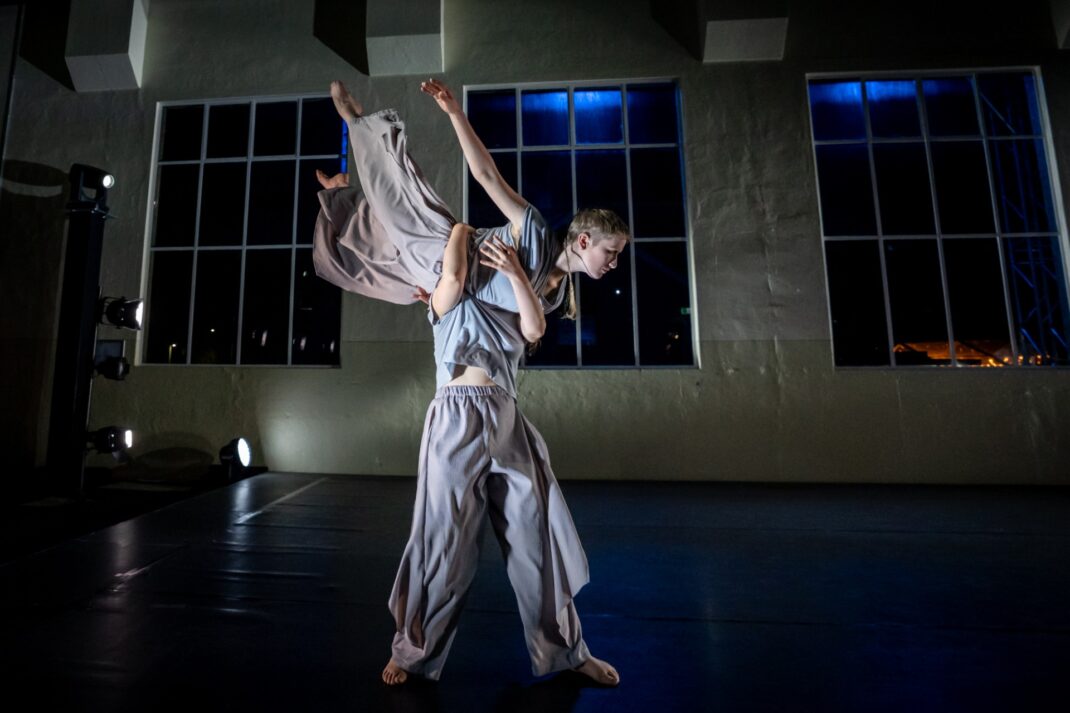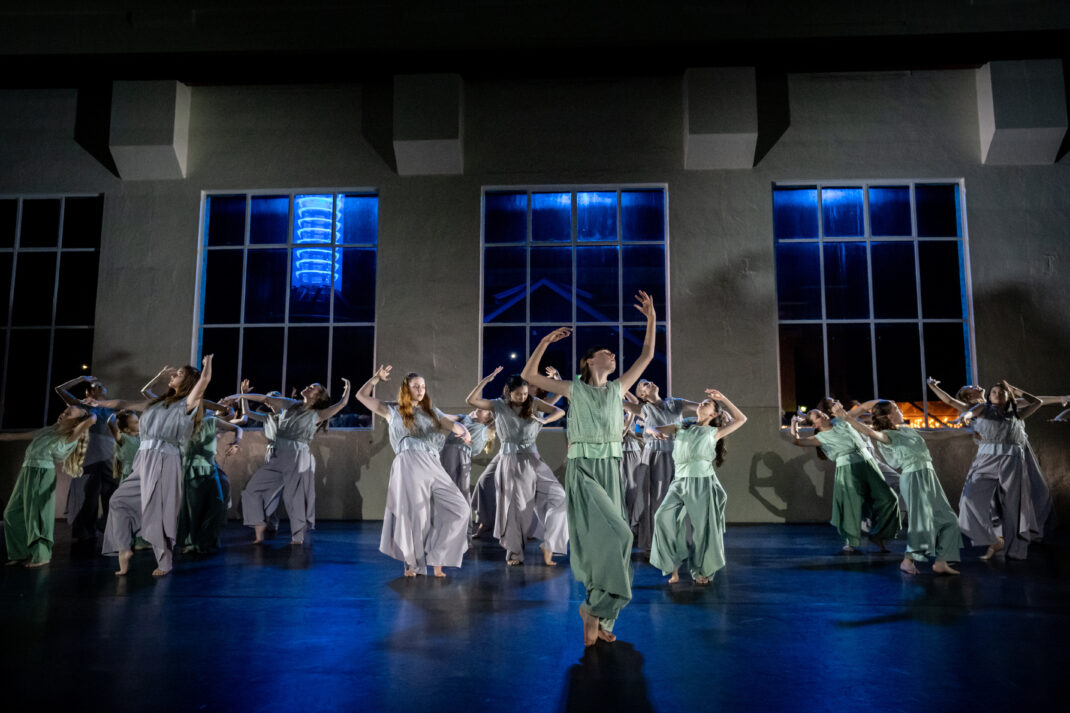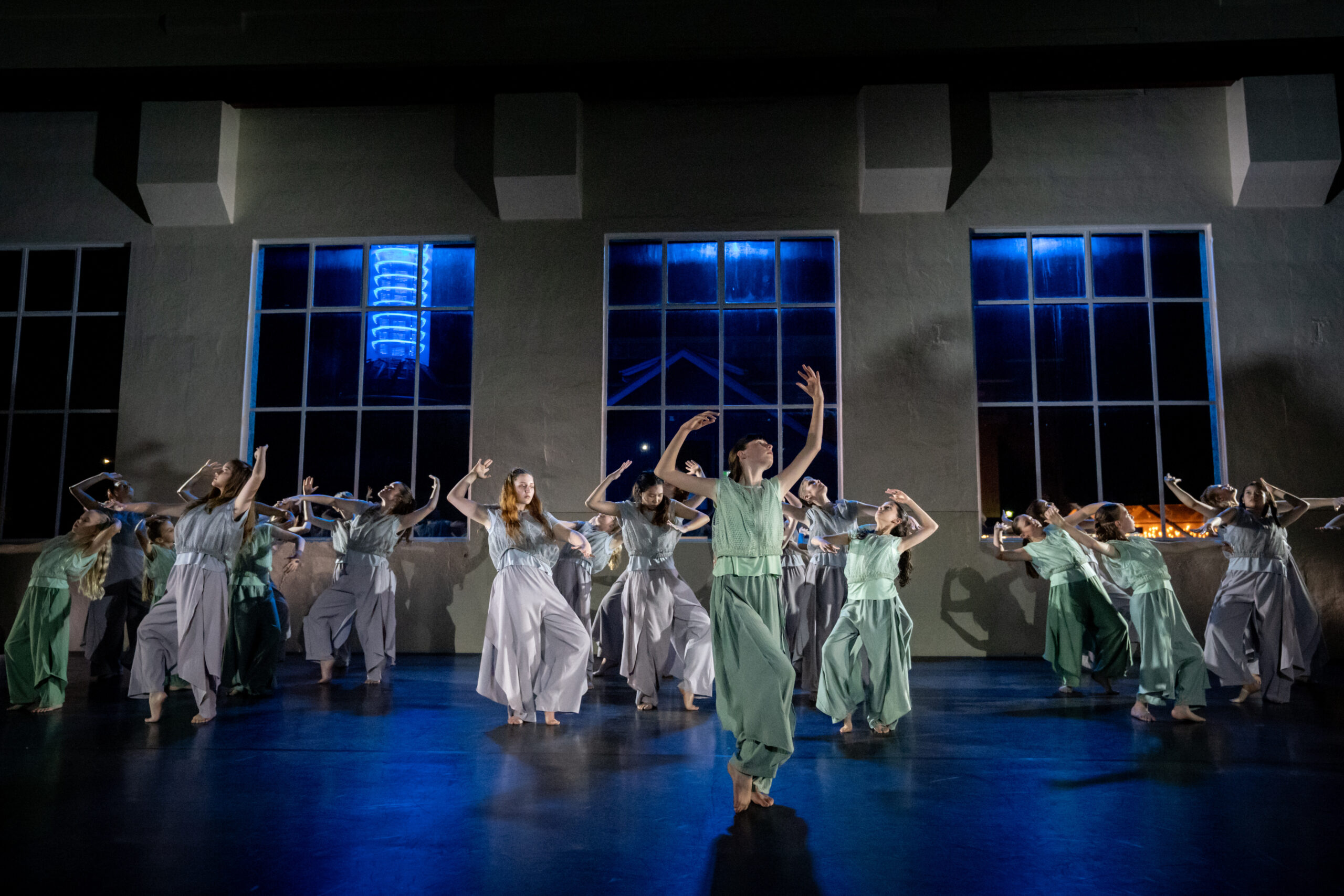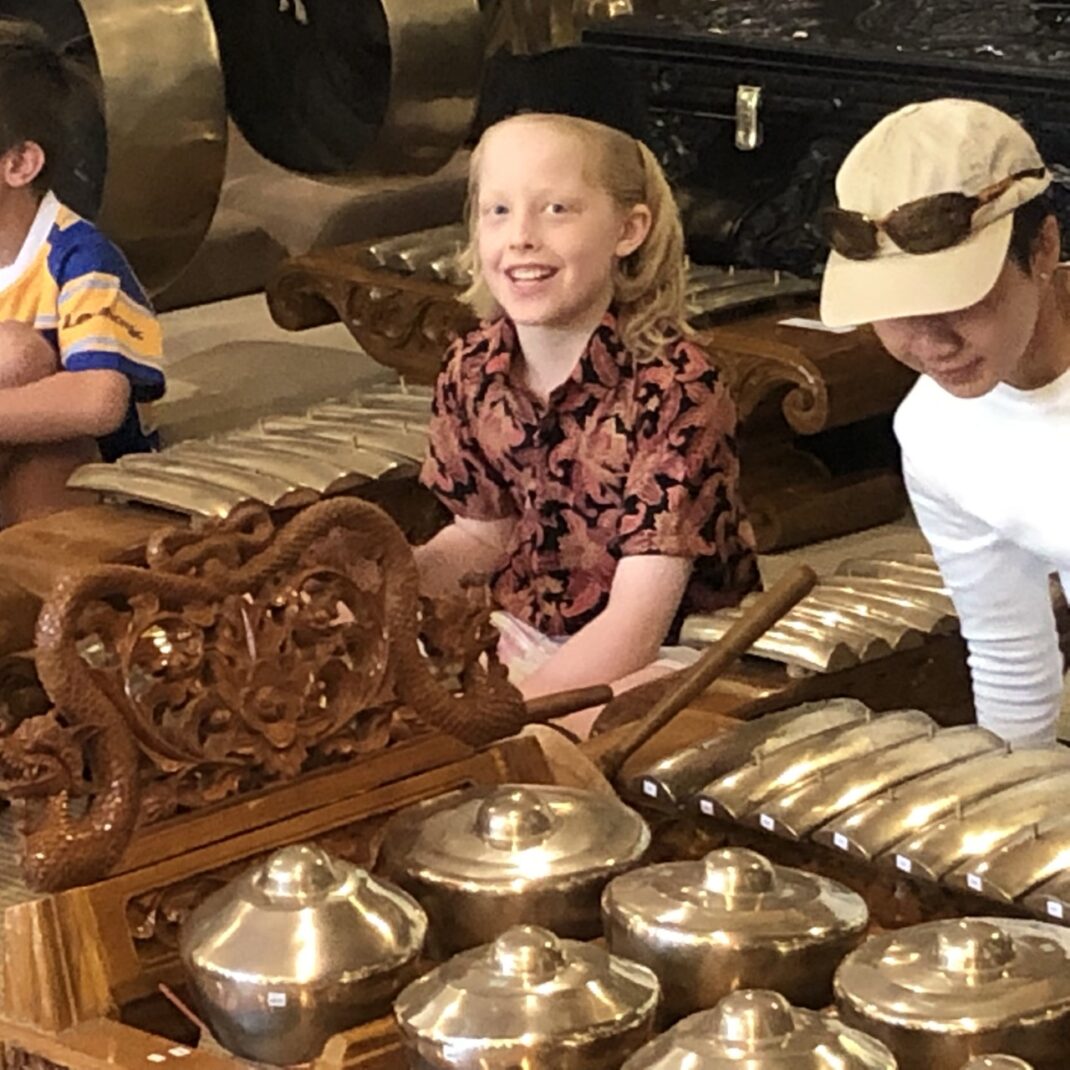2 May 2025. Fitters’ Workshop, Kingston, Canberra
Garden took place in a very different venue from what we are used to for productions by QL2 Dance: the Fitters’ Workshop in the Canberra suburb of Kingston. I was somewhat taken aback when I first heard of this major change from the traditional theatre space in which the annual May production by QL2 has usually taken place. I’d never heard of the Fitters’ Workshop (despite having lived in Canberra for several decades). But, after doing some research into what and where it was, I was more than a little taken aback—it was a space with no stage, no dressing rooms, no seating, nothing of a theatrical nature really. It seemed like nothing more than an empty rectangular space.*
Well I needn’t have worried really as the space had been fitted out by QL2 with a portable stage that covered pretty much the length of the hall. The stage was raised off the floor and I assumed, therefore, that it was a sprung stage. Great! Cross lighting had been installed and three or so rows of tiered seating had been placed along one wall. There was a curtained off area at each end of the stage, one of which was used as a dressing area. Would the dance works be well accommodated in this area I wondered?
I am also assuming this set up was not permanent because the Fitters’ Workshop seems to be available for hire for other activities (at least it was, and perhaps still is?). Will QL2 continue to perform in this building?
Garden opened with Bloom choreographed by James Batchelor to a score by Batchelor’s frequent collaborator, Morgan Hickinbotham. Bloom continued Batchelor’s ongoing interest in the lineage of Ausdruckstanz, the expressive dance movement that had its beginnings with choreographers working in the early twentieth century in Germany and Austria. It began with a certain degree of simplicity in movement and groupings but slowly became more complex and developed greater connections between dancers when some duets as well as some solo work were introduced. There was an emphasis throughout on curved arm movements and ongoing fluidity. Every moment was beautifully performed by all the dancers whatever their age.
The shape of the performing space was wide rather than deep and Batchelor’s choreography seemed to take advantage of this with a constant and engrossing crossing of the wide area available. The idea behind Bloom was to indicate intergenerational connections and the growth of artists across time. It worked well.

The second work on the program was the beginning is the end is the beginning with choreography by Alice Lee Holland and performed to sound by STREAMS, a ‘convergence’ as program notes tell us, between Malcolm McDowell and Stevie Smiles. In many respects the work seemed somewhat similar in choreographic content to Bloom especially in the continued emphasis on arms, the way in which the wide stage space was used, and in the juxtaposition of group and solo work. I wondered whether there had perhaps been too much emphasis on input from the dancers rather than from the choreographer?
The beginning is the end is the beginning was distinguished in my eyes, however, by the way the younger dancers performed. While all performers danced strikingly, with passion and commitment, the young dancers performed with a technique that defied their age. The work continued the overall theme of the program, that of artistic growth across time.
Costumes for both works were by Andrew Treloar, whose experience is broad ranging across art forms and companies. They were quite loose fitting and thus eminently danceable costumes. They looked great too.
As a final comment, the Fitters’ Workshop worked quite well as a venue for this show, although I still wonder whether or not the young dancers are missing out on the experience of working in a traditional theatre space. A regular theatre is a somewhat different experience and is a space that many of them will find themselves working in should they go on to a professional career. Having said that, I have to say that the standard of the dancing in both works was a credit to all.
Michelle Potter, 7 May 2025
Featured image: Scene from Alice Lee Holland’s the beginning is the end is the beginning. QL2 Dance, 2025. Photo: © Olivia Wikner, O&J Wikner Photography

*The current Fitters’ Workshop website gives the following historical information: ‘The Fitters’ Workshop is a heritage listed building and part of the Kingston Power House historic precinct. Constructed in 1916-1917 and designed by John Smith Murdoch, the Fitters’ Workshop formed a key part of a wider industrial complex that enabled maintenance of government plant and equipment, and construction work.’




